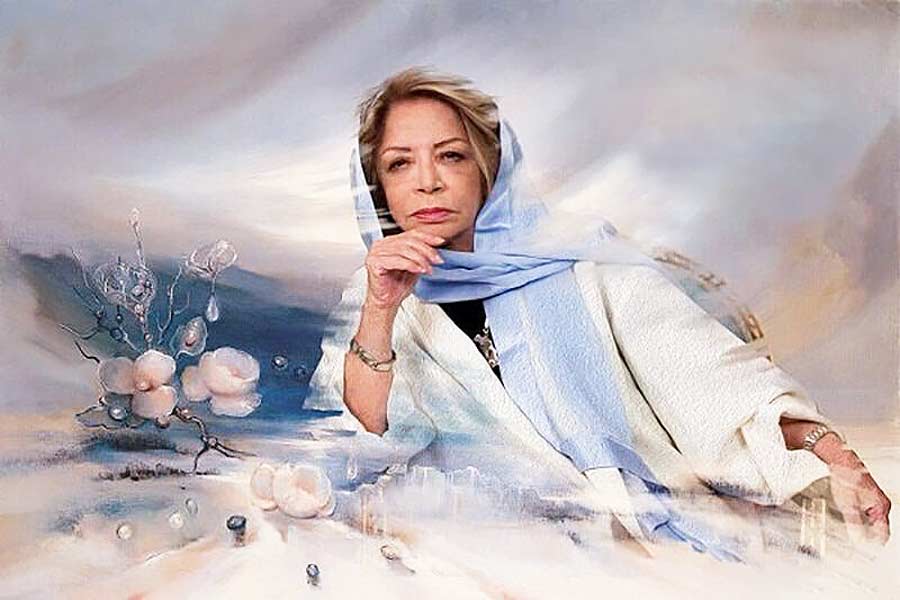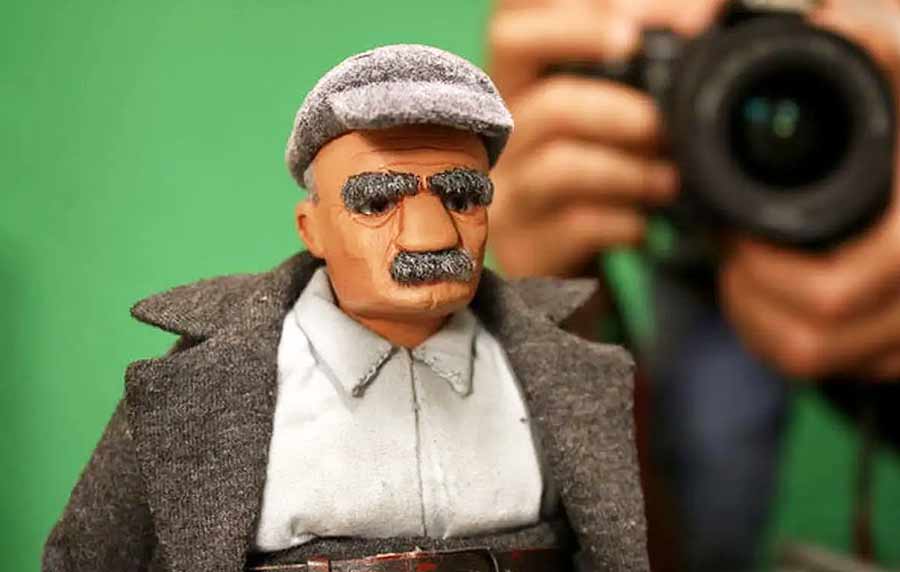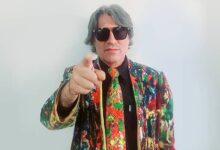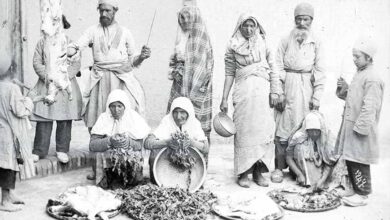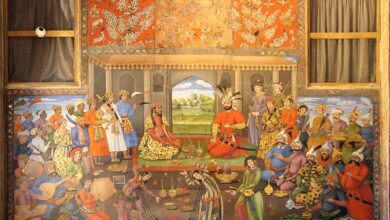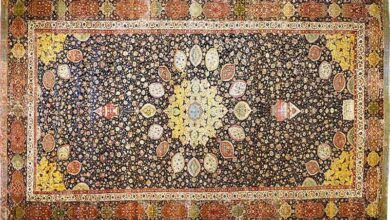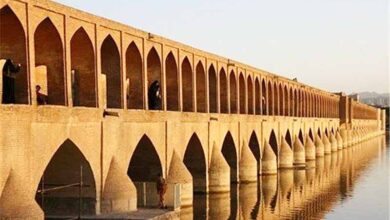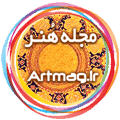A study of Tehran’s architectural facades in the last decade from the perspective of murals
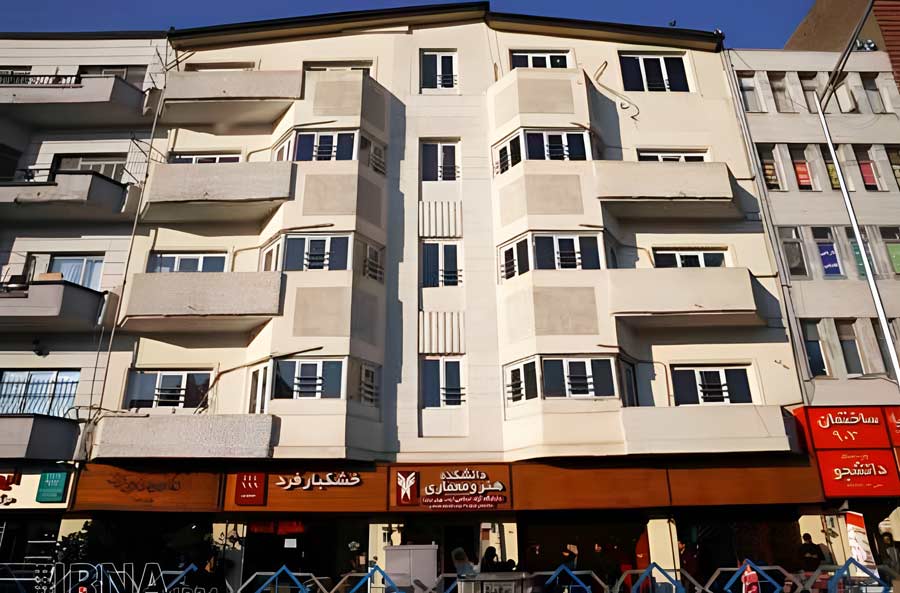
Murals are a significant form of urban art. Murals and the quality of their colors are often discussed, but the important issue is the way the painting and the building are connected, and this is the main work of the artist.
According to Artmag.ir, although every work of art in the city will have its own special effects on the urban landscape, given that cities are full of architectural facades,
One of the most important urban arts is murals in the form of architectural facades that affect the city. In this research, which was conducted using a library, analytical, and field method, an attempt has been made to study architectural facades from an artistic perspective and to provide a solution for organizing the architectural facades of the last decade in Tehran.
With this assumption, it is possible to remove the architectural form from being merely functional and approach it as a mural work; while maintaining its functional role. Thus, by explaining the criteria and creating a specialized high forum in the field of urban arts, it is possible to organize architectural facades while also promoting the understanding of urban visual arts.
Introduction
Painting, architecture, and sculpture have long been part of the visual arts and have had and continue to have significant interdependence. However, due to the development that each of these arts has experienced, they have become independent and more widespread. Architectural facade design is not an industry, but a type of art, and the resulting work is a manifestation of this art. If architectural art is viewed from a visual perspective, architectural facades can be works of art that are realized in the form of murals.
The importance of this issue in other societies is demonstrated by the establishment of a group for artistic cooperation by the American Institute of Engineers in 1964. The primary purpose of this committee is to encourage artists and craftsmen, especially regarding the place of art in urban environments.
For example, Louis J. Redstone, in his book Art and Architecture, has created a separation of the arts and primary elements from a philosophical point of view with architecture. He deals with most private or public buildings that reflect successful collaborations with artists and tries to create conditions that lead to fruitful collaborations between artists and architects.
The importance of the collaboration between architect and painter and the elimination of the boundary between the arts is to such an extent that, according to Victor Vasarely, it can create an ideal city and harmony between feeling and reason in the external manifestation of human life.
In this regard, it is necessary to note that architecture is art itself. According to Le Corbusier, “The architect must be an artist. He must be perceptive and impressionable in relation to visual art. He must influence his artistic concept with every line he draws, or every volume and surface he creates. The field of the architect’s work requires the development of his sensitivity in the use of space and volume. Today, when sovereignty over all arts is not achievable by the architect, it is better for the architect to cooperate with the painter and sculptor from the beginning.
Research Method
The information in the present research was obtained through library and field methods and the method of conduct is analytical. In this method, by referring to bibliography, reference books, Persian and Latin books, publications and articles and websites related to the subject and field impressions, the research subject and research sample were selected, studied and examined. Due to the extensive architectural facades of the last decade in Tehran, an area from Enghelab Street, the distance between Enghelab Square and Palestine Crossroads was selected. This axis was chosen because of its antiquity, centrality, importance, and also its distinct identity in the city.
Research Background
Due to the novelty of the subject, there is no article or written source on the study of architectural facades of Tehran in the last decade from the aspect of mural art. The studies are mostly field-based. Regarding architectural facades from the aspect of mural art, only examples of them can be mentioned in the history of art.
Architectural Facades from the Perspective of Murals
The development of industrial and urban life on the one hand, and the absence of macro policies in organizing urban architectural facades on the other, have caused the roughness of the city’s appearance.
A successful urban work of art is one that is not seen despite the necessity of its presence. With the spread of socio-cultural conflicts, the chaotic face of Tehran today has created an increasingly chaotic set of urban environment and appearance in architectural facades.
Since having a beautiful city is one of the rights of citizens, paying attention to organizing the aesthetic structures of architectural facades as spontaneous or non-purposeful murals on the face of cities should be considered as an important necessity in urban art and environmental beautification. On the other hand, urban murals, in their most comprehensive definition, imply a type of environmental art that finds identity and meaning in connection with architecture and the urban audience.
In addition to its own aesthetic, technical, and interactive aspects, this art can play a valuable role in architectural facades, urban landscape organization, and urban art by creating visual changes in the environment, which will show its increasing value and credibility in combination with the rich culture and art of our country. Unfortunately, artists and architects do not pay attention to the common identity of murals and the city’s architectural facades.
By having an artistic view of architectural facades in the form of urban murals, the architectural facade can be brought closer to an environmental aesthetic work (mural) while having practical features. Therefore, considering the necessity of proportion and harmony of urban art works with the environment and the city, it is necessary to explain a comprehensive and unified program on the scale of Tehran that includes the rights of citizens and the characteristics of urban art works. Also, the rights of citizens and owners regarding architectural facades overlooking the city should be explained and formulated.

Mural painting is of great importance among the types of urban art; one of the characteristics of this art is that it cannot be distinguished from the background of the work and is part of the architecture and environment.
When the artist works in his studio, he only focuses on the environment of the work frame and does not pay attention to which gallery the work enters, and from what distance it is seen. In the case of mural painting, it should be assumed that it is a work of art on a larger scale in an unmanaged environment that is combined and created with the environment. That is, the composite work is understood in interaction with the audience.
Understanding the environment and urban identity and maintaining harmony with it is a necessary condition for designing urban facades from the perspective of mural painting, and maintaining the independent identity of each building and its facade also indicates the designer’s creativity.
The quality of mural painting in architectural murals, before technical skills in painting, is related to the artist’s perception of the concept of form and space and painting in architecture and the perception of the necessary harmony between visual and expressive factors in the environment and the open audience. This principle is not only an individual and group taste, but also requires that its practical necessity and need in creating harmony between the architectural facade and the architectural mural be considered as a fundamental principle in the art of mural painting.
The aesthetics of architectural facades in urban neighborhoods, from the visual aspect of the facade, is an important part of the urban landscape, and recognizing the position and place in the city is very important for understanding its mutual effects on the identity of the city and the behavior of citizens.
Urban facades are an inseparable part of urban neighborhoods that are closely related to the identity and culture of the neighborhood. In an urban neighborhood, the category of beauty of architectural facades is valuable. The aesthetic importance of facades in urban neighborhoods is so great that artists, architects, and all urban managers are obliged to respond and interact with their audiences.
The beauty of a building’s facade affects the entire city. Disturbance in the face of the city is a new phenomenon. The integration of the facades of urban buildings and the materials used in them makes urban facades more beautiful from a visual perspective.
Architectural Murals on Enghelab Street
Unfortunately, in the design of architectural facades in these areas, one can only encounter the visual clutter of shops and storefronts. In some cases, these storefronts display their merchandise directly and in large volumes on the facade of the commercial property, which not only causes visual pollution in the area, but also imposes a specific cultural identity on the neighborhood and region.


Once again, the characteristics of these showcases are the lack of attention to the visual layout of the showcase with regard to the environment and the addition of writing with special effects on its facade, which greatly affects the city’s view. In designing urban facades in this area from a mural perspective, the selection of materials and coloring of urban facades should be done with regard to the city’s weather conditions, and the visual structure created in the form of the desired environmental factors should take into account the beautification capabilities of architectural murals.
Audience
One of the main characteristics of art in the present era is the connection with the audience and their strong presence. So that a work of art cannot be considered complete without a connection with the audience. Architectural murals, on an urban wall, can act like works of art in a gallery for citizens who do not have time to visit art galleries, where countless audiences pass by them daily. Of course, in a busy city like Tehran and an area like Enghelab Street, these facades should be very simple and with a calming approach to better connect with the audience.
A common expression between facades and the comprehensive urban plan, creating a bridge between artists, architects, and urban designers, and creating a common pattern and architectural facades of Tehran, are generally achieved from a set of facades overlooking the public space. Unfortunately, in the last decade in the city of Tehran, there has been no common language between architectural facades in terms of visual appearance. That is, they neither have a common culture of expression, nor have they used the same materials, nor do they follow a specific style.
In fact, each facade in the city is a sign of the economic and social status of the creator and his way of thinking and attitude towards different issues. The urban facade of Tehran in the last decade is actually a combination of different components that are formed based on the events that occur in the streets and passages. These components can have interesting common points with each other that cannot be denied.
The attention of the Tehran City Beautification Organization to architecture and urban appearance, which can be expressed in the visual field in the form of spontaneous murals, must be comprehensive and have a unified management. Therefore, given the necessity of proportion and coordination of urban art works with the environment and the city, it is necessary to explain a comprehensive and unified program on the scale of Tehran that includes citizenship rights and the characteristics of urban art works.
The aesthetic structure of the architectural murals of the last decade of Tehran is faced with materials, materials, substrates, and the appearance of the wall and architecture that have a very different form and function compared to the past. This means that the most important way to harmonize and connect the mural with the aesthetic structure of the architecture of the last decade of Tehran is to use new technology and materials while maintaining the previous identity, and except in special circumstances, using traditional materials and materials for architectural murals in relation to this issue will be unprincipled and useless.
Success in facade design, as spontaneous murals, requires recognizing the specific characteristics of the desired urban axis and preserving its values. In a way that creates a new attitude with the ability to communicate with the audience and increase the artistic value of the mural. Also, the rights of citizens and owners regarding architectural facades overlooking the city must be formulated and explained.
It is essential to create a high-level forum on urban arts in which cultural, historical, and artistic considerations are seen with the rule and urban system of Tehran as a cultural capital, and to present solutions that are appropriate to the developments in society and by employing local and cultural aesthetic structures, with a broad perspective in the field of urban arts, especially with regard to the characteristics and capabilities of urban murals, in order to create a bridge of communication between urban artists, in cooperation with architects, artists, and urban designers.
Analysis of the murals on Enghelab Street
Not paying attention to the harmony of urban murals with architecture, the surrounding environment, and of course the audience in Tehran, causes the indifference of citizens towards the culture and public identity of the city.
Unfortunately, the architectural murals of Tehran in the last decade have not been able to attract the attention of their audience, namely the citizens. These facades are homogeneous in one way and heterogeneous in another. Homogeneous because they are implemented using a common language on the body of the city’s components, and since each of these spaces expresses its purposes and needs with the help of this language and are not in harmony with the adjacent facades, they are heterogeneous.
This transformation of content in the facades of Enghelab Street brought about fundamental changes in their materials and colors. After the Islamic Revolution, the square assumed a public role and became an up-to-date mirror of the diverse behaviors of society. Thus, the appearance of Enghelab Street in the last decade is the result of an 80-year process that began during the first Pahlavi era and continues to this day.
The rapid expansion of the city in the last decade has placed the square as a central nucleus within the city. Of course, despite all the changes in cultural and social content, the square has still maintained its constant role as a gathering place for people on national, religious, and political occasions.

The result of these developments in changing the face of the street is seen more in the facades of buildings, urban furniture, and signs than in other elements. The aesthetic characteristics of the architectural facades of Enghelab Street in the last decade include the analysis of Enghelab Street facades, the physical components of the street architectural facade, the identity of the facades, the urban landscape, the artistic characteristics of the urban facades of Enghelab Street buildings in the last decade, spontaneous murals, and the position and aesthetic impact of Enghelab Street architectural facades on the audience.
Physical components of Enghelab Street facade
Some of the physical components that make up the facade of Enghelab Street have an identity aspect: such as the facade of the main entrance of Tehran University, and others have a functional aspect: such as the facade of Tehran University, the facade of bookstores, the facade of buildings, the facade of shop windows, and sometimes urban furniture.
In the past, the architectural facade of Enghelab Street, in the area in question, had a more harmonious appearance in terms of visual arts than in the last decade. Unfortunately, the use of various materials and architectures in the last decade has destroyed this harmony. Also, due to the limited lifespan of new facade materials, their form, color, and texture also change and sometimes wear out over time. Also, the air pollution in this area and the age of the buildings have added blackness and soot to this incoherent space in terms of color and form, which creates a mess in terms of visual beauty. Due to the lack of organization and the existence of regulations, undesirable views are created in urban walls, making it difficult for the observer to see the sky. “The additions added to the facades of buildings also do not have a clear organization and even distort the quality of the valuable walls.”
The facade of the storefronts of Enghelab Street is also one of the most important elements in the architectural facades of this street from a mural perspective, especially from the perspective of the pedestrian audience who has a more limited field of view of the architectural facades, and their greatest impact can be seen in spaces where the volume of storefronts is greater; for example, the outskirts of Enghelab Square.
In this space, due to the high volume of storefronts and connection to the urban facade, the greatest impact can be seen in the facade from a visual perspective. The architectural facades in Enghelab Square are very chaotic. This creates a lot of unrest from an aesthetic perspective. The excessive crowding of form and color in the facades of the storefronts of spaces such as the one in front of the University of Tehran, with their harsh and offensive colors, contrasts with the architectural facades of this area.
Unfortunately, in the southern part of the street, from Enghelab Square to Daneshgah Street, the high density of pedestrians also adds to the crowded space of the storefronts and creates a confusing visual space in the architectural facades of this street.
In examining the architectural facades, from the perspective of murals, in the northern and southern fronts of this street, between the Quds and Palestine intersections, the arrangement of the storefronts is more in line with the architectural facades.
The lack of population density in this area attracts the audience more and makes them interact with the space more. In the area of this street from the Wesal intersection to Palestine, the storefronts, with their more coherent shape and less visual disturbance, are more harmonious and are in line with the building facade and the appropriate materials and the identity of this street.
Unfortunately, in examining the aesthetic characteristics of the architectural facade of Enghelab Street, from the perspective of murals in the area in question, many obstacles and problems are observed. By organizing these facades, including not using heterogeneous and inappropriate materials with the identity of the facades, when renovating the facades, changing the structure of bus stops, for better visibility of the facades, organizing the facades of storefronts, to create a more suitable urban landscape for pedestrians, creating harmony between the heights of buildings for better visibility of the facades, creating relaxing facades with more suitable colors and materials in crowded spaces, coordinating the signs with the facades, for example, not using multiple signs in one facade and placing the signs on the facade walls and in specific positions, etc., a better urban landscape can be created from a visual perspective.
In order to create harmony between the architectural facades of this street, the cultural identity of the street, and then the aesthetics of the street, are of great importance. Unfortunately, in examining the facades of this street, there is no single and common pattern and each facade follows its own patterns.
Conclusion
Today, architects can easily find capable and competent artists in their workplace and have no restrictions on the use of different possibilities regarding artistic forms and materials.
It can be seen how the structure of old materials can be used by artists and architects as a new structure of forms. In a given society, with a relatively homogeneous culture, it is possible to create attractive spaces and understandable appearances and visual appeal for the majority of the audience of the society by explaining a comprehensive system.
The architectural facades of each city are the cultural identity of a society. Therefore, since unfortunately the placement of buildings next to each other, with diverse facades such as stone, glass, brick, etc. has led to the creation of urban visual pollution and instilling a sense of anxiety, depression and boredom, the rights of citizens and owners regarding architectural facades overlooking the city should be formulated and explained.
By enacting laws and interacting with artists, the gap created between art and industry can be eliminated. It is possible to prevent architects from creating a boundary between their expertise and other arts by giving them advice, and as in the past, all artists should cooperate with each other to create an urban work.
Improving the beauty of the urban landscape can be achieved through interaction between artists and architects in the urban field. After that, designing architectural facades, with the opinions of visual arts experts, can be effective when designing buildings.
It is necessary to make the urban context bodies in urban design more recognizable among citizens through training, so that attention can be paid to the characteristics and visual signs of the neighborhood and region in the design of murals.
Urban facades that lack an identity card are in proportion to the urban landscape, macro policies, and general culture, which should be revised in this regard; then a regulation for urban architects and artists with an executive guarantee should be developed. Because the urban landscape is of considerable importance in terms of the coordination of architectural facades overlooking the city. The general culture of society, metropolitan and national policies are also not unaffected in this regard.
To improve the situation, the architectural facade of each street should have its own identity features, which unfortunately the architectural facades of the last decade lack this feature. This identity should be visually and conceptually in harmony with the components of the city. But unfortunately, the current facade of Enghelab Street does not reflect its identity.
Due to the many changes and interference in these facades, regardless of the identity of the buildings, it does not reflect how these facades were in the past, and unfortunately, the current architectural facades of Enghelab Street do not comply with the principles of visual arts and these facades have not made its appearance more beautiful. This point can be worrying and the authorities should think of a solution.
The visual chaos and heterogeneity of the facades, in terms of form, color, and texture, on the architectural facades of Enghelab Street is no secret to anyone. Unfortunately, the beauty and visual order of these facades is lacking, and the sense of anxiety, worry, depression, and gloom they induce is also worrisome.

To organize the facades, creating a related group between architects and artists is the most appropriate solution. Then, the culture and identity that governs the street are the criteria for organizing the architectural facades of this street. Of course, it should be kept in mind that the old buildings on this street are also important; because the history and identity of the street cannot be ignored.
Unfortunately, artists and architects do not pay attention to the common identity of murals and the architectural facades of the city. By having an artistic view of architectural facades, in the form of urban murals, the architectural facade can be brought closer to an environmental aesthetic work (mural) while having practical features.
The aesthetic structure of Tehran’s architectural facades in the last decade has undergone fundamental changes compared to the past, in relation to various factors. In the past, due to obtaining facade materials and materials from the climate and nature of the same region, the facades had a traditional and local identity. Therefore, this structure in the past was closer to an aesthetic work (mural) than today.
Also, unfortunately, today, with the use of new materials, technology, and existing obstacles, the environmental aesthetic principles of facade murals have been largely forgotten.
The attention of the Tehran City Beautification Organization to architecture and urban facades must be comprehensive and have a unified management, because architectural facades in the visual field can be expressed in the form of spontaneous murals. Therefore, according to the studies conducted, given the necessity of proportion and harmony of urban art works with the environment and the city, it is necessary to explain a comprehensive and unified program on the scale of Tehran that includes the rights of citizenship and the characteristics of urban art works.
Unfortunately, many of the newly established contemporary architectural facades on Enghelab Street can exist in any place or even another country, without in any way reflecting the native and local characteristics of themselves and this street.
This street, which is considered one of the most central streets in Tehran, today has undesirable effects on the city space and the spirit of the citizens in terms of color and form. The materials, color, and texture of the facades on Enghelab Street have been created according to three periods of architecture and urban planning (old, middle, new).
To change the architectural facades of the street, from a mural perspective, the most important thing is to change the color, texture, and type of materials in the facades. Paying attention to this type of color change and using similar methods in changing the pattern of the city’s materials will help cities achieve a more desirable space, and paying attention to color harmony is considered one of the most important components in the architectural facades of this street.
An important element in designing the architectural facades of this space should be done with a different approach and with respect to the demographic, cultural, construction, and commercial characteristics, so that the facades of this street appear harmonious and appropriate to the aesthetics of the street from a mural perspective.
The lack of coherent bodies and groups of liaison between artists and architects, based on artistic standards in society and, more importantly, within educational systems, is itself a reflection of the above deficiency. Perhaps only individual love and motivation, which, within the context of individual limitations, provides a limited response to curiosity in the scope of art and its developments. This research also points out this deficiency.
Another aspect of the issue is the combination of arts such as painting and sculpture with architecture, and the creation of a broad reflection and function of social life. This is unique in its own way. In addition to the executive forces, which employ a wide range of specialists from social sectors; the collaboration of artists with architects in designing architectural facades draws a huge group of audiences to view them. In fact, architectural facades expose themselves to the eyes of the audience, and there are few works of art that have been able to place themselves in such a direct and comprehensive way in the field of vision and judgment of a countless group of audiences.
Explaining the regulations, using local and cultural aesthetic structures, with a broad perspective in the field of urban arts, in particular, considering the characteristics and capabilities of urban murals, is a suitable solution. In this regard, the need for complete knowledge of the environment governing the architectural facade, the spatial conditions and cultural status of the place, the status and position of the audience, etc. should be considered with regard to these characteristics. Also, in order to create a bridge of communication between urban artists, it is necessary to develop a single regulations for urban art and the design of urban facades, in cooperation with architects, artists, and urban designers.
The important and determining factors for organizing architectural facades are:
-Creating a general assembly regarding the cooperation of artists and architects when designing facades, before entering the field of mural painting
-Explanation of special aesthetic rules and regulations for architectural facades
-Determination of general citizenship rights for urban facades
-Reviewing by architects regarding the integration and integrity of art and paying attention to it from the perspective of the increasing interest of the audience. This issue has the potential to ensure that if art, and especially painting, becomes a part of everyday life, it has the power to make life fruitful and is able to help organize architectural facades in our country.
-Creating a single model for designing street architectural facades, in cooperation with artists and architects and observing it throughout the entire facade, as well as consulting architects and artists with the public, and then explaining special aesthetic rules for architectural facades, which is very important.
One of the most important factors in the unity of the architectural facades of Enghelab Street is the emphasis on the cultural identity, historical factor, and history of this street. To organize the facades of Enghelab Street, from a mural perspective, these facades must have an overall visual unity. The most appropriate solution, regarding the placement of the country’s architectural facades, in the specialized field of urban arts, is to create a specialized high council on urban arts, in consultation with architects and other urban artists, which unfortunately is not done in our society today regarding the design of architectural facades.
The most important factor affecting the aesthetics of the architectural facades of Enghelab Street is the texture and color of the facade materials. Also, the form and color of the facade decorations are also important. By explaining the special aesthetic rules and regulations for architectural facades, this important matter can be addressed.
In order to create visual balance, it is necessary to coordinate the relative heights of the buildings in the architectural facades of this street. Unfortunately, the current situation of this street is not like this, and the buildings are of the greatest importance for changing the current architectural facades of Enghelab Street.
Shops and storefronts are also of secondary importance. In order to organize the architectural facades of Enghelab Street, it is necessary to pay attention to the visual and aesthetic characteristics of the architectural facades throughout the street, which unfortunately has not been paid attention to in the last decade. After that, the spatial conditions and cultural status of the place are important. It is no secret that paying attention to the old facades of this street is of great importance.
Source: Journal of Advanced Art Studies
Asghar Kafshchian Moghadam(1), Sahranaz Pirdehghan(2)
1.Associate Professor, Faculty of Visual Arts, Fine Arts Campus, University of Tehran
2. Master of Arts in Painting, Faculty of Art, Soureh University of Tehran
References
Atashinbar, Mohammad – 2010, “Street Landscape, Analysis of the Relationship of Body and Meaning on Enghelab Street”, Manzar Journal, Special Issue on Urban Landscape in Tehran, No. 11, pp. 34-93.
Parhas et al. – 1998, Landscape Design Collections of Enghelab Street: Urban Design Program of Enghelab Street, Volume 14, Tehran: Physical Organization of the Analysis and Assessment Phase.
Kafshchian Moghadam, Asghar – 2006, “How to Organize a Mural Painting”, Tehran: Journal of Visual Arts, No. 52.
Vasarli, Victor – 1972, Plasticity, translated by Parviz Eftekhari, Tehran: Rose.
https://www.irna.ir/photo/2987250


